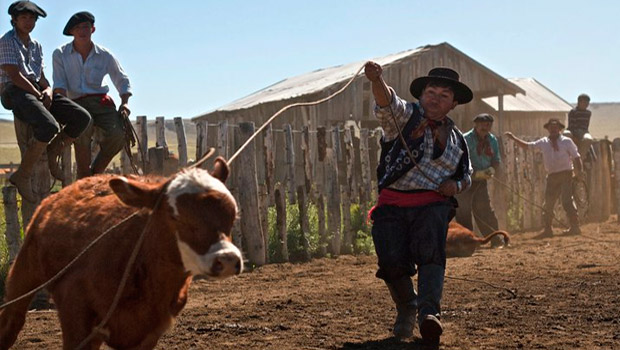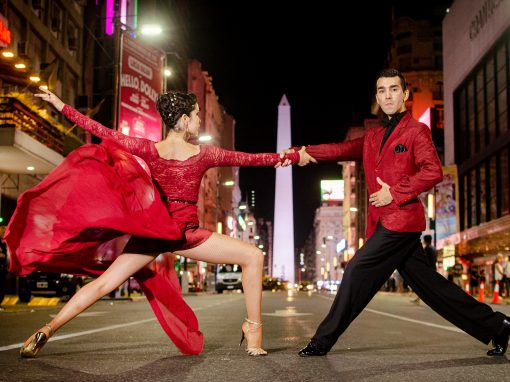If you’re heading to Argentina, odds are ‘gauchos’ are already on your radar. Whether in Buenos Aires or heading to their stomping grounds in Patagonia, the culture of these rustic cowboys is at your fingertips. Celebrated for their solitary and nomadic lifestyles, superb horsemanship and elaborate attire, the gaucho culture is deeply rooted in the country’s history and still alive today.
Content
The Evolution of the Gaucho
The Fashion Know-How of an Argentine Cowboy
The Protein Rich Diet of a Gaucho
Meet a Modern Gaucho
The Evolution of the Gaucho
The traditionally nomadic gaucho lifestyle was forced to evolve as owners of large estates, known as estancias, began fencing the vast plains across Argentina’s Pampa region to create cattle farms. This process is often referred to as the “domestication of the gaucho”. Though their free-range lifestyle has evolved, the reputation and lasting impact of the gaucho culture carries on. These wandering cowboys have hardly become domesticated – rather, they’ve adapted.
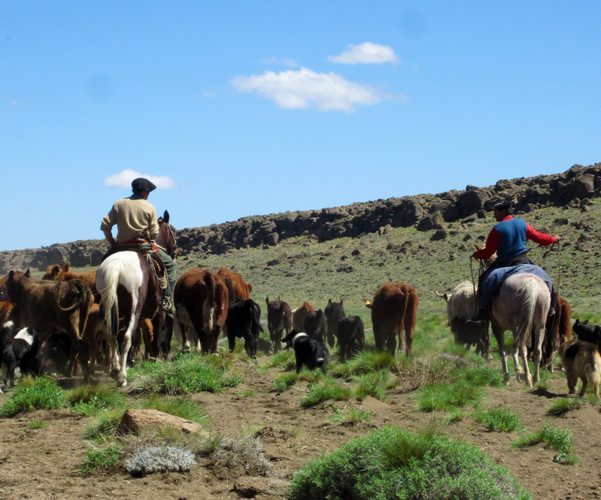 Like their predecessors, these gauchos take on the open range.
Like their predecessors, these gauchos take on the open range.
Photo by Britt Fracolli
Argentina is home to an estimated 150,000 gauchos that come from a mix of Spanish, Portuguese, Arab/Berber and Native American ancestry. Cattle were originally brought from Paraguay to Argentina in 1580, but these skilled horsemen were first documented scouring the grasslands and hunting wild cattle in the early 18th century by Spanish travel writer Alonso Carrio de Lavandera.
Living off a diet of beef and maté, gauchos spent their days on the plains hunting and herding cattle. They gained the reputation for being strong and silent, but with an affinity for violence when provoked -a trait that proved essential in the War of Independence. Gauchos’ knowledge of the terrain and their contribution to the fight won them hero status in Argentina, further romanticizing their lifestyle and culture.
Today’s gauchos are an essential element to the success of maintaining farms in Argentina. Their exceptional horsemanship, a skill set they developed from the beginning of their cultural development, is critical for rounding, herding and branding cattle.
The Fashion Know-How of an Argentine Cowboy
The pride that gauchos take in their appearance is reflected in their elaborate get-up. Here’s a head-to-toe breakdown of their style…
Hats | A boina, or beret, is a tight fitting hat around the brim that stays on in high winds and fast-paced rides across uneven terrain. The sombrero is smaller than a traditional Mexican sombrero that gauchos wear to protect themselves against the sun. |
Scarf | The pañuelo is a beautiful scarf made of fine silk that’s worn around their neck as a garnish of sorts, also used for warmth. |
Shirt | The shirt, or camisa, is often covered by a wool poncho for long rides or inclement weather. |
Pants | Wide-legged pants, bombachas, are held up by a faja, an ornate woven belt wrapped multiple times around the guacho’s lower stomach and hips. This helps with lower back pains and to support their hips while riding. |
Shoes | On their feet, gauchos wear apalgatas, canvas shoes with rope soles. |
Accessories | Gauchos carry a rebenque, a whip with a thick handle, and a facón, a large knife used for everything from trimming their horses hooves or jerry-rigging a saddle to eating an asado. |
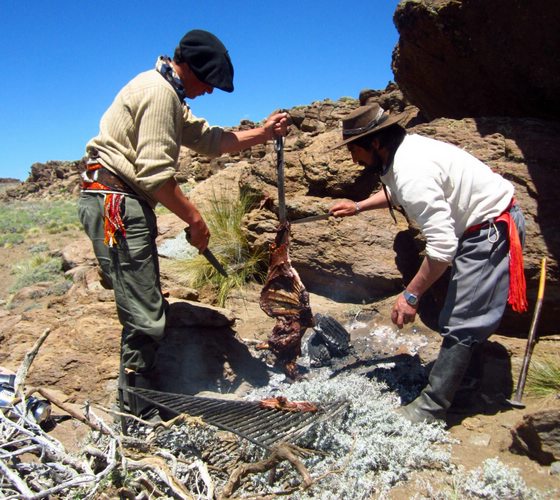 A slab of ribs prepared al asador coming right up!
A slab of ribs prepared al asador coming right up!
Photo by Britt Fracolli
The Protein Rich Diet of a Gaucho
Aside from riding, asados -considered the national dish of Argentina– are an essential component of traditional and modern gaucho culture. During asados, the conversation between gauchos centers around horses and cattle and is generally accompanied by wine and dancing.
The meat, traditionally beef, is slowly cooked over the embers of a fire. Often, the fire burns for a while to get cooking, and then the embers are moved off to the side where the meat is placed over them. Cooking can be done al asador, in which case the meat is placed on a metal cross and the carcass of an animal is splayed open next to the fire, or a la parilla, in which case a grill is placed over the embers and the meat cooks on that.
There are many details and nuances to the art of an asado, but gauchos generally use minimal seasoning. Often just salt is used once the meat is cooked with a side of chimichurri, a salsa of sorts made of a blend of parsley, oregano, garlic, paprika, olive oil, salt, pepper and sometimes onion or spicy peppers.
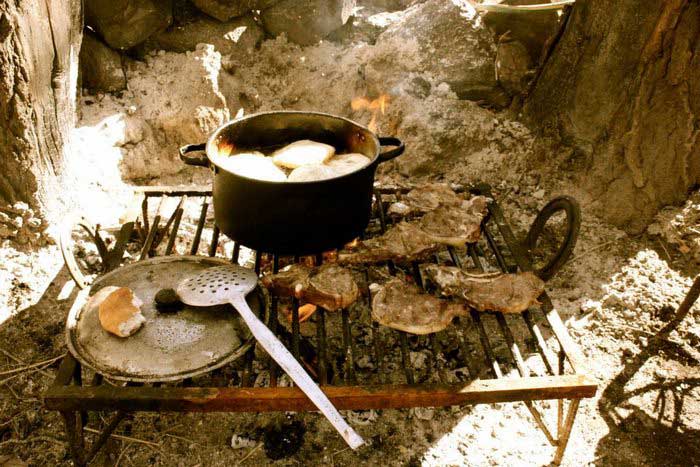 A gaucho’s breakfast of champions, an asado.
A gaucho’s breakfast of champions, an asado.
Photo by Page Buono
Gauchos use only their hands, bread (or tortas fritas) and a facón to cut the meat from the bone of the carcass or to cut a chunk from the grill, and then place it in the bread. The bread acts as a plate, and for each bite the gaucho would take a chunk between his teeth, then use the facón to separate it from the larger piece.
Meet a Modern Gaucho
Jorge Guajardo, a modern Argentine gaucho, is an exceptionally skilled horseman and ranch-hand on an estancia in the Neuquen province of Argentina. Jorge has a special way with the horses – riding them standing up or jumping over the neck of a galloping horse, touching his feet to the ground on one side and then back to the other.
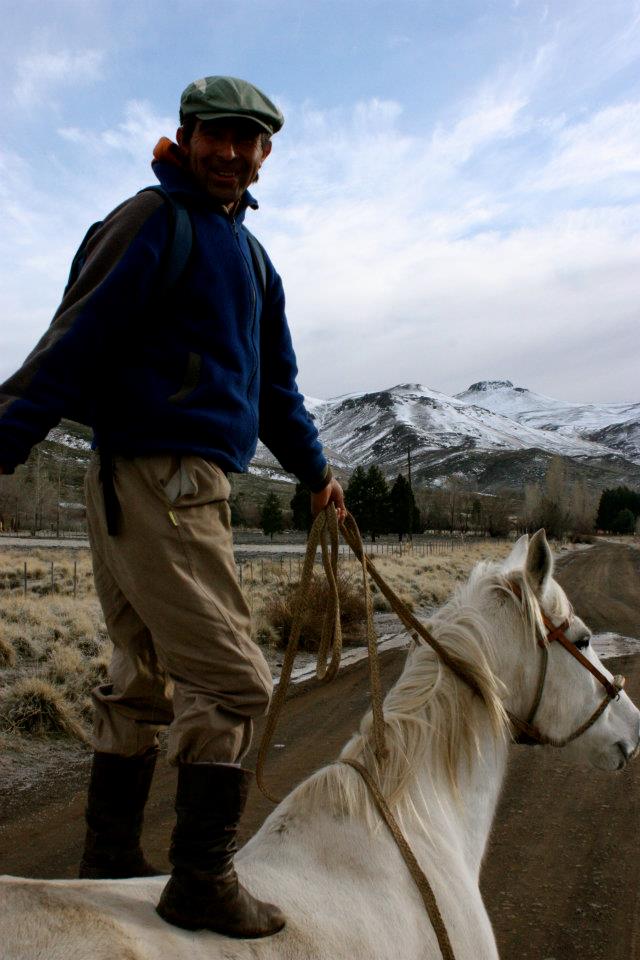 Jorge demonstrates his acrobatic skills during a morning ride.
Jorge demonstrates his acrobatic skills during a morning ride.
Photo by Page Buono
Like his predecessors, Jorge wakes early in the morning, starting the day with maté, a traditional Argentina herbal tea, and the notorious counterpart to beef in the gaucho diet. He sits by the fire and listens to the local radio, which brings news from gauchos on other estancias. After a light breakfast of toast or tortas fritas, he tends to the horses, usually squeezing in a ride, and returning for an asado in the evening.
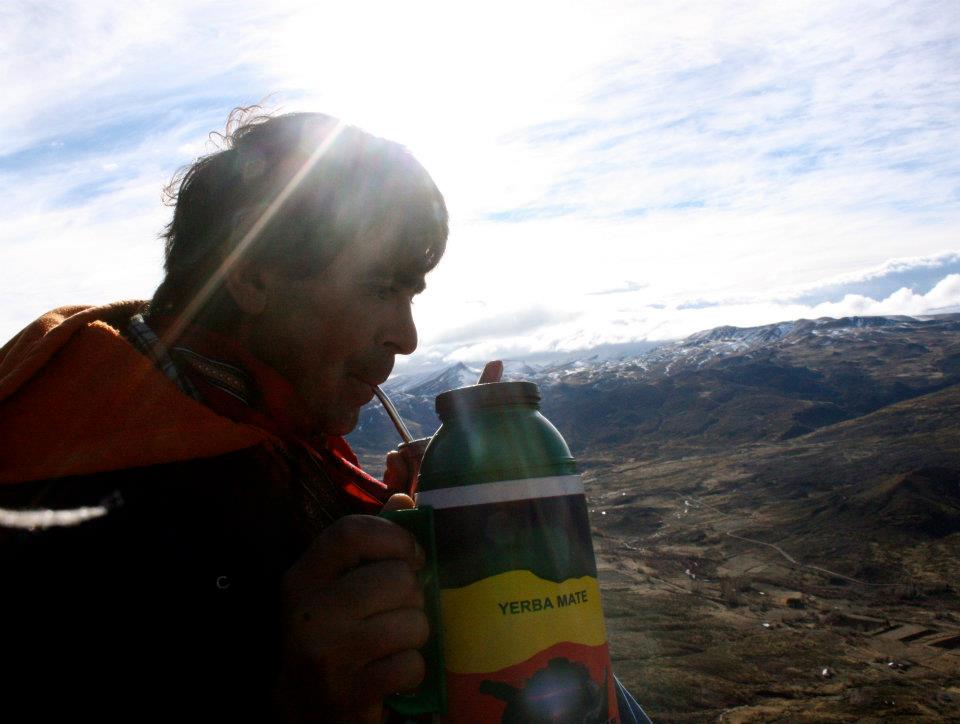 Jorge enjoys some morning maté to power him through the day.
Jorge enjoys some morning maté to power him through the day.
Photo by Page Buono
Gauchos like Jorge work at estancias scattered throughout Patagonia, most of which are concentrated in the Pampa region of Argentina. Whatever your travel route, be sure and take the opportunity to observe the evolution and adaptation of the powerful gaucho culture for yourself.

Latin America for Less is a group of travel experts who live, work, eat, and breathe all things South America. Their inspiration stems from a deep appreciation for the beauty and diversity that make this continent so special.

